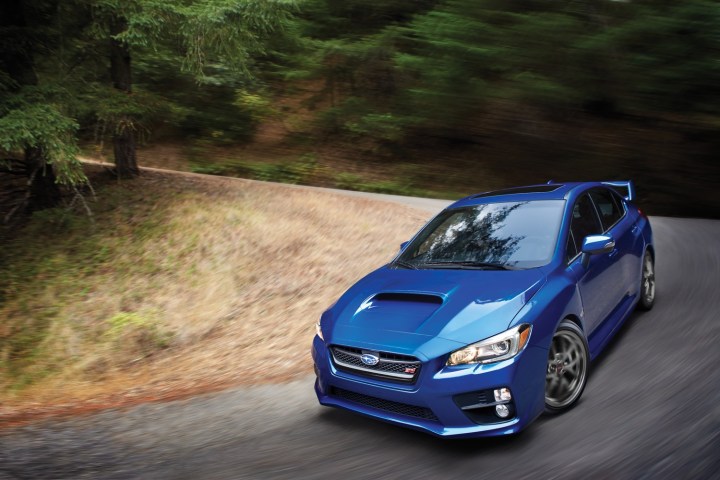
For 2017, both models get new tricot headliners, as well as a reshuffling of options. The base WRX STI gets automatic headlights, which were previously available only on higher trim levels. Reverse automatic braking is now an option on WRX Limited models equipped with Subaru’s EyeSight safety system.
Added to the WRX and STI options list last model year, EyeSight uses onboard cameras to enable a suite of electronic driver aids, including lane departure warning, adaptive cruise control, and a pre-collision system with forward automatic braking. These systems apply the brakes at low speeds without driver intervention, to help lessen the severity of collisions.
There are no technical changes, not that either model really needed any. The WRX uses a 2.0-liter turbocharged boxer-four, which sends 268 horsepower and 258 pound-feet of torque to all four wheels through six-speed manual or CVT automatic transmissions. The STI has a 2.5-liter turbocharged boxer-four, which pumps out 305 hp and 290 lb-ft. Unlike the base WRX, the STI is only offered with a six-speed manual.
Despite using the outgoing-generation Impreza platform, the current WRX and STI will probably stick around for a while. They were introduced fairly recently as 2015 models, even though the version of the Impreza they’re based on debuted for the 2012 model year. Consequently, expect Subaru to take its time in developing new versions based on the redesigned Impreza platform. Instead, Subaru may launch more variants of the current models as it seeks to increase the presence of its STI performance brand in the U.S.
The 2017 Subaru WRX and WRX STI go on sale this summer. Pricing starts at $27,515 for the WRX and $36,015 for the STI (both prices include destination).


